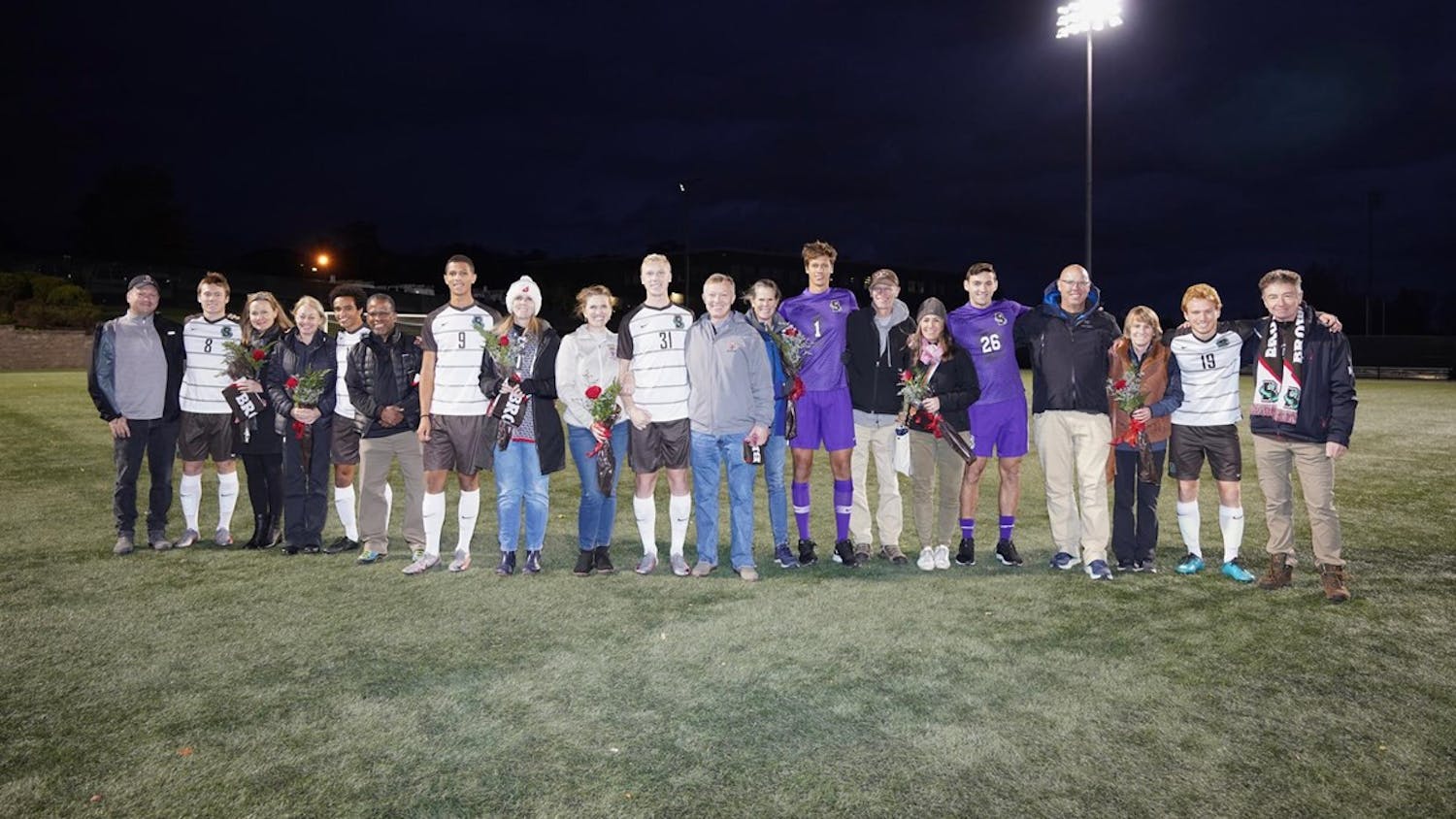Donning chef hats and aprons, the 12 contestants worked tirelessly in a cloud of smoke, rummaging through the pantry to find ingredients for a final winning product. But this was not your typical Iron Chef competition - the pantry offered a variety of metal scraps, and the task was to create a beautiful symbolic sculpture out of junk.
The nonprofit organization the Steel Yard, co-founded by Clay Rockefeller '03 and Rhode Island School of Design graduate Nick Bauta in 2001, is a multi-purpose industrial site that acts as an arts facility and education center. In addition to offering classes on welding, blacksmithing, ceramics, jewelry and glass and metal casting , the Steel Yard, a 10-minute bus ride from Kennedy Plaza on Sims Avenue, also hosts exhibits, workshops and theater performances.
Nathaniel Harris, a board member of the Yard and founder of Newport Biodiesel, said it is "important for people to work with their hands," adding that the Yard offers "an opportunity for people to get dirty."
What's cookin', good lookin'?
Team members gathered on a September weekend afternoon in the industrial complex's open space to discover Providence's very own Iron Chef - a title reserved for the team that best showcased its industrial craftsmanship in a time frame of 80 minutes.
Staying as true to the televised cooking show as possible, the competition consisted of three teams, each comprised of a master chef, a sous chef, a "yardie" and an apprentice. A "pantry" of metal scraps, corroded steel, wire mesh and other seemingly innocuous junk was arranged in a large pile before the teams' work studios, and contestants were free to rummage through its contents to assist them in their production. With the theme of 'citrus' and secret ingredients, including a motorcycle head, bamboo sticks and three 44m deck gun shells from World War II, the teams dove into the challenge. Before long, the sound of clanging metal and grating materials drowned out the rock music drifting through the speakers.
Several members of the Brown community have a close relationship with the Yard. Richard Fishman, professor of visual arts and director of the Creative Arts Council, was one of the judges for the competition. Fishman, who said he was looking for "imagination" and "surprise" from the contestants, taught Rockefeller during his time at Brown and has since followed the Yard's activities. He also remains in touch with former students such as Dave Cole '00 who are also engaged with the nonprofit.
Cole was one of the contestants vying for the title of "Iron Chef" and could be seen ransacking the pantry for a piece of metal scrap that could be transformed into a winning sculpture.
As the teams' blow torching and smelting techniques held the crowd's attention, Fishman described the Yard's work as "transformative," adding that "everyone needs to have a passion and sometimes it can be discovered in a place like this." Every year, he recommends his students visit the Yard and enroll in its classes to learn to use welding equipment. He added that the Yard is a great way for Brown students to interact with and meet the larger Providence community.
"It can change people's lives who wouldn't have access to a creative space," he said.
Iron men and women
The Steel Yard engages in a range of projects centered around the foundry arts, or metal casting. As she pumped the handle of a blackened apparatus and stoked the kindling fire, the instructor April Franklin gave the audience a live demonstration of blacksmithing. In addition to teaching a class on blacksmithing and texturing, Franklin is also in charge of refurbishing the Yard's blacksmithing studio. As a graduate of the Penland School of Crafts in North Carolina, Franklin said she first heard of the Steel Yard through former colleagues and has been instructing at the nonprofit since 2004.
"In an age where everything is so manufactured, it's very important to reconnect with handmade objects," Franklin said. Her classes, which introduce students to the art of blacksmithing and crafting finished tools, usually have about five members, but she said they are highly diverse in terms of their age demographic. Students from Brown, RISD and East Greenwich High School, as well as a retired chef, can all be found working together in one of the weekly classes she teaches.
Franklin described her students as "really involved and enthusiastic, sometimes overwhelmingly so" and added that she especially enjoys seeing young students take an interest in such hands-on metalwork activities. Franklin said that she usually has at least one student from Brown enrolled in her courses each semester.
Exploring the backyard
The Yard has a long-standing connection with the University - Rockefeller was also a former student of Barrett Hazeltine, professor emeritus of engineering . According to Hazeltine, Rockefeller's interest in urban development and the recycling of old buildings led him to design an independent course study, and it was during this time that he began to consider the possibility of transforming the abandoned industrial site into a creative space for the community.
The success of the Steel Yard even prompted Hazeltine to incorporate it into his course, ENGN 0090: "Management of Industrial and Nonprofit Organizations." The course, which Hazeltine described as a "succession of analyzing cases," used the example of the Steel Yard as part of its final exam and in some homework assignments. Hazeltine said he used the Yard as a case study "partly because it was an intellectual challenge, and partly because it was an inspiring story."
Students seemed to enjoy learning about the organization, and a few even proceeded to check out the site and enroll in some of the classes, Hazeltine said. He added that he might include the Yard in future classes because it would be "interesting to write the case to see where they've gone and where they're going."
The Steel Yard was brought into the spotlight recently when it was used as the venue for the Swearer Center's 25th anniversary celebrations. Roger Nozaki, director of the Swearer Center for Public Service and associate dean of the college, said he had met with Rockefeller and visited the site in the past. He described it as a "fascinating location (where) old industrial Providence starts to take on a new life with the founders' creativity."
The Swearer Center had the option of hosting its celebrations on campus, but wanted to venture out and bring Brown into the community instead, Nozaki said. The organizers ultimately selected the Yard because "our mission aligns itself with what the Steel Yard's mission is," he said.
With stalls showcasing glazed ceramics, uniquely fashioned pottery, customized jewelry and T-shirt
s, the Steel Yard caters to a wide range of interests and crafts.
Franklin described the Yard as very accessible, adding that it has the potential to emerge as a highly "influential center for urban arts and crafts." Its classes help "instill pride in what you have produced, and an appreciation for those people who have come before you and who are currently making objects for everyday use," she said.
ADVERTISEMENT




